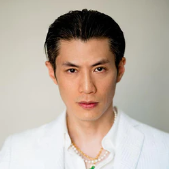Migraines can be debilitating, often causing intense headaches, nausea, and light sensitivity. Those who suffer from chronic migraines are constantly seeking relief. In recent years, Rife machines have gained attention as a potential alternative therapy for migraine relief. In this guide, we’ll explore the use of Rife machines as a strategy to alleviate migraines and the considerations to keep in mind.
Understanding Migraines
Migraines are complex neurological conditions characterized by severe, recurrent headaches. They can be triggered by various factors, including stress, hormonal changes, certain foods, and environmental stimuli. Migraines often lead to throbbing head pain, nausea, vomiting, and heightened sensitivity to light and sound.
Rife Machines and Migraines
Rife technology involves using specific frequencies to target and eliminate pathogens or health issues within the body. While the primary focus of Rife technology has been on conditions like Lyme disease and bacterial infections, some individuals have explored its potential for migraine relief.
The Potential Benefits
1. Pain Reduction
One of the primary reasons people turn to Rife technology for migraines is its potential to reduce pain. By targeting specific frequencies associated with pain relief, some individuals have reported a decrease in the intensity and duration of their migraine headaches.
2. Relaxation and Stress Reduction
Stress is a known trigger for migraines. Rife machines may help induce relaxation and reduce stress levels, potentially minimizing the frequency and severity of migraine attacks.
3. Customized Frequency Therapy
One of the advantages of Rife technology is its ability to provide customized frequency therapy. This means that individuals can tailor the treatment to their specific migraine triggers or symptoms.
Considerations for Migraine Sufferers
If you’re considering using a Rife machine for migraine relief, here are some important considerations:
1. Consultation with a Healthcare Professional
Before starting any alternative therapy, including Rife technology, it’s essential to consult with a healthcare professional. They can provide guidance, rule out any underlying medical conditions, and ensure that Rife therapy is safe for you.
2. Quality and Safety of the Device
Ensure that the Rife machine you choose is of high quality and has been tested for safety and efficacy. Consult with experts or healthcare providers for recommendations.
3. Complementary Approach
Rife therapy should be viewed as a complementary approach to migraine management. It can be used alongside conventional migraine treatments and preventive strategies.
4. Personalized Treatment Plan
Work with a healthcare provider or Rife therapy expert to create a personalized treatment plan. This plan should take into account your specific migraine triggers and symptoms.
5. Consistency and Patience
Consistency is key when using Rife technology for migraine relief. It may take time to see significant results, so be patient and committed to your treatment plan.
The Verdict
While there are anecdotal reports of migraine relief with Rife machines, it’s important to approach this therapy with caution and under the guidance of a healthcare professional. Migraines can have complex causes, and what works for one person may not work for another. Rife technology should be considered as part of a holistic approach to migraine management, which may include lifestyle changes, stress reduction techniques, and other therapies.
If you’re a migraine sufferer interested in Rife therapy, consult with your healthcare provider to explore whether it may be a suitable addition to your migraine relief strategies. Remember that your health and well-being are of utmost importance, and any alternative therapy should align with your overall healthcare plan.

David Wong, also known as “The Qi Master,” is a successful entrepreneur and author who specializes in health, wellness, and Qi Energy. As the creator of Qi Life, he has developed groundbreaking frequency-based technologies that effectively improve health and quality of life. His journey began with self-healing an incurable digestive disease using frequency and energy devices, and his vision is to make physical and mental wellness accessible to all, without the need for invasive procedures or medication. Learn More >>>